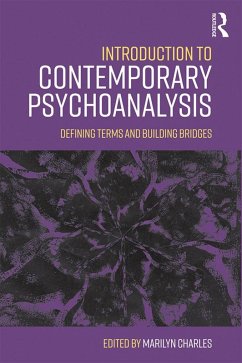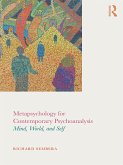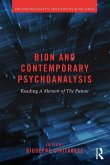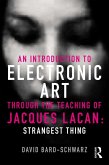Introduction to Contemporary Psychoanalysis seeks to make this rich wealth of information more accessible to clinicians and trainees. Psychoanalytic clinicians from various schools here describe the key ideas that underlie their particular perspective, helping the reader to see how they apply those ideas in their clinical work. Inviting the contributors to speak about their actual practice, rather than merely providing an overview, this book helps the reader to see common threads that run across perspectives, but also to recognize ways in which the different lenses from each of the perspectives inform interventions Through brief vignettes, the reader is offered an experience-near sense of what it might be like to apply those ideas in their own work. The contributors also note the limits or weaknesses of their particular theory, inviting the reader to consider the broader spectrum of these diverse offerings so that the benefits of each might be more visible.
Introduction to Contemporary Psychoanalysis offers readers the richness and diversity of psychoanalytic theory and technique, so that the advantages of each particular lens might be visible and accessible as a further tool in their clinical work. This novel, comparative work will be an essential text for any psychoanalyst or psychoanalytically inclined therapist in training, as well as clinicians and those who teach psychoanalytic theory and technique.
Dieser Download kann aus rechtlichen Gründen nur mit Rechnungsadresse in A, B, BG, CY, CZ, D, DK, EW, E, FIN, F, GR, HR, H, IRL, I, LT, L, LR, M, NL, PL, P, R, S, SLO, SK ausgeliefert werden.
"Psychoanalysis has gone from being a monolithic Truth to a loose congeries of positions that have agreed to disagree-and maybe sometimes agree. How and in what way these contemporary positions align themselves with each other, theoretically, clinically and politically, remains obscure. In this brilliantly edited volume, Dr. Charles allows a series of distinguished authors to explicate their positions, including an assessment of its limitations-a thematic that postulates that every position ultimately becomes a countertransference; and that our success depends more on integrating positions that establishing some new superordinate Truth. This thoughtful, well-organized and informative volume should be indispensible to anyone, in or out of the field, in search of some coherence in our current disorder."- Edgar A. Levenson, Fellow Emeritus, Training, Supervisory Analyst and Faculty at the William Alanson White Institute. Adjunct Clinical Professor of Psychology at the NYU Graduate Studies Division, Honorary Fellow at the Postgraduate Center for Mental Health, Honorary Member of the American Psychoanalytic Association, Life Fellow of the American Academy of Psychoanalysis, and Distinguished Life Fellow of the American Psychiatric Association.
"This book respects all the contemporary schools of thought; psychoanalysis is tribal territory, where controversy is rife and not always respectful. It brings together in the palm of the hand all the strands that currently exist, but which head off in their own direction without concern for the whole. The field of view is also strewn with obstacles as words and ideas subtly change their exact meanings in the course of migration over time. So, such a project is not easy. Nor is it usual, as one frequent answer is a simplistic pluralism; anything goes, and the more ideas the merrier we shall be. Less frequent is the much more important stance we find here. Specialists survey their own frame of reference and deliver the reader the wherewithal to make our own assessments and comparisons."-Bob Hinshelwood, Emeritus Professor, Centre for Psychoanalytic Studies, University of Essex, UK









